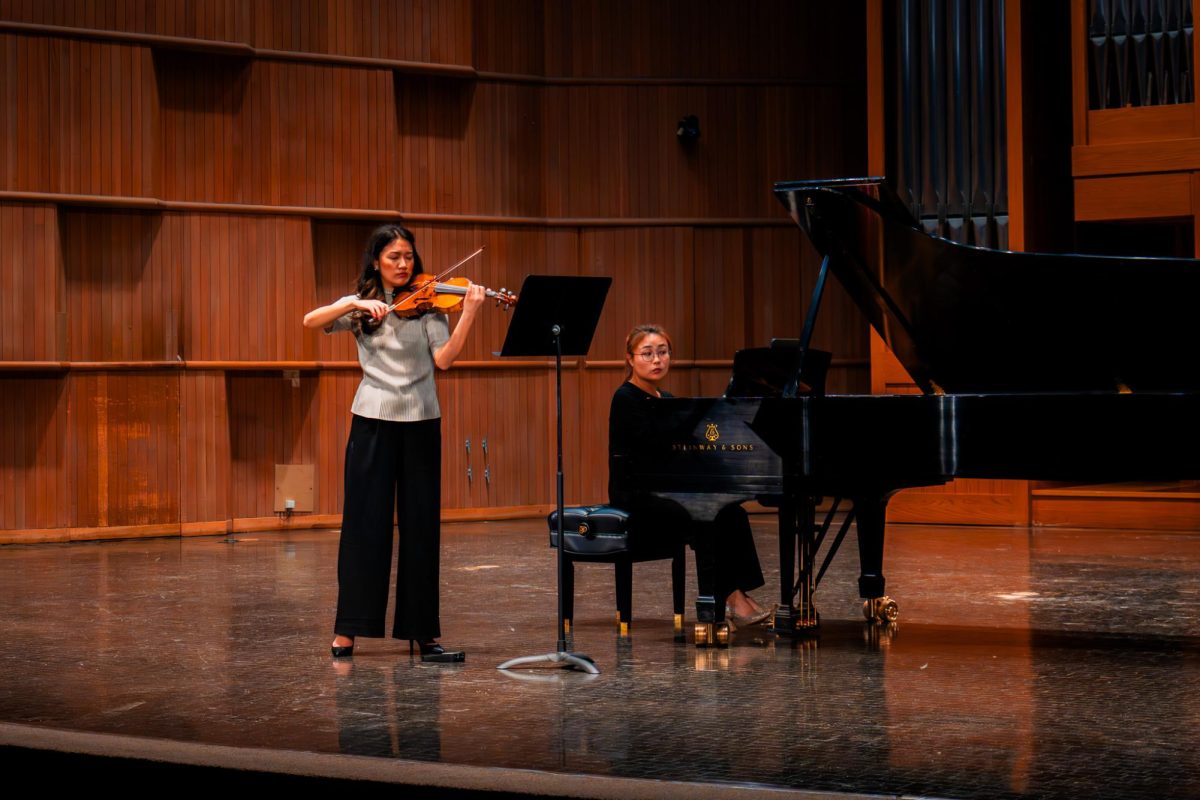Goosebumps, tears to the eyes, the feeling of being “choked up,” or “taking your breath away” are sometimes the feelings music evokes. But why? Why do people sometimes get these feelings when listening to music?
Dr. David Huron, arts and humanities distinguished professor at Ohio State University presented “On the Musically Sublime,” a comprehensive theory that explained physiological responses to music.
The physiological responses to music can be called sublime. The use of ‘sublime’ to describe experiences, especially artistic experiences, can be traced back to Irish philosopher Edmund Burke.
According to Burke, sublime experiences are always linked to some elements of fear mixed with pleasure. Burke used the word “awe”—wonder filled with fear—as an example.
So what is it that makes a musically experience sublime?
“Sublime experiences, an initial fear, is cognitively assessed as inconsequential and that the induced pleasure hinges on affect of contrast, where the positive experiences is evoked or enhanced due to contrast with the previous up and current negative state,” Burke explained.
Dr. Huron used his suppressed fear theory to explain why people have the physiological responses (listed above) to music. The suppressed fear theory states that goosebumps, tears, constricted larynx and breath holding comes from a contrastive affect due to cortical suppression of subcortical fear responses. The sublime experiences begin with an element of automatic subcortical unconscious fear, that becomes discounted or suppressed.
Deep, profound emotional responses to music are similar to classic fear responses—fight, flight, freeze and appeasement (which is seen among social animals).
“When the musical passage to the induced sublime experiences are analysed, the acoustic features are consistent with factors that are known to invoke fear—either physical fears or social fears,” said Huron. Loud sounds, low pitch, infrasounds, volume, scream, acoustic proximity and approach and surprise are properties invoke that physical fear.
Each fear responses (fight, flight, and freeze) reveals features such as goosebumps, vocalized panting, breathholding and tears. Even when these fears are cognitively assessed as inconsequential, people still have these physiological responses and features.
According to Dr. Huron, the physiological responses such as goosebumps, tears to the eyes, the feeling of being “choked up” or “taking your breath away” that people have when listening to music are results of suppressed fear theory.
“There is a class of highly positive emotional experiences that appear to be linked to fear responses,” said Huron.









